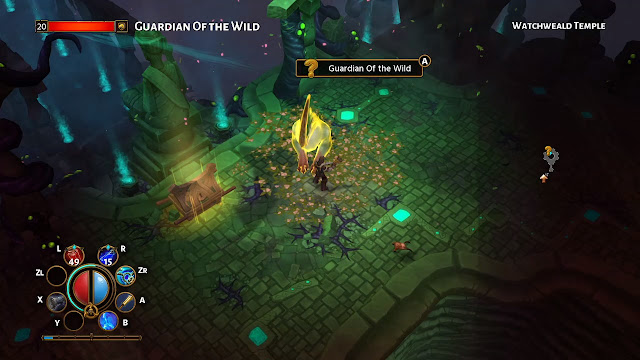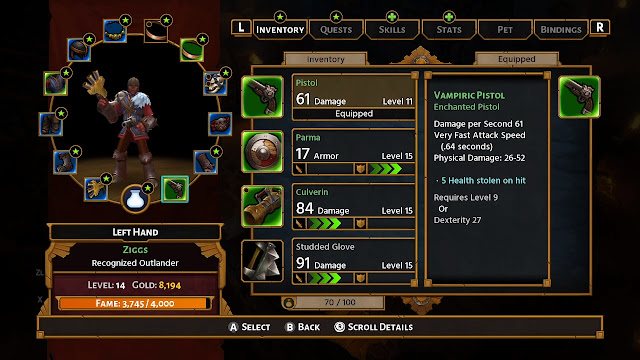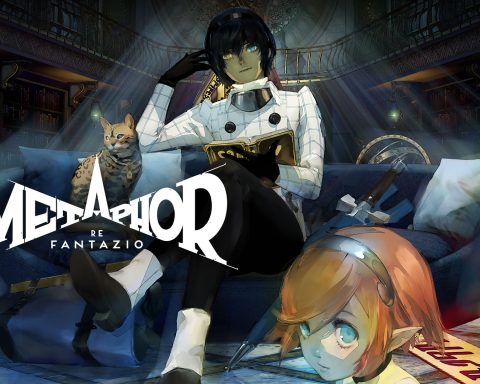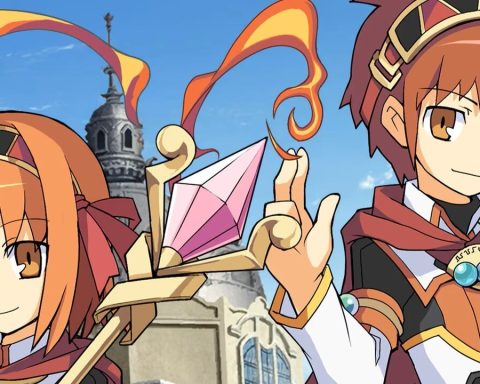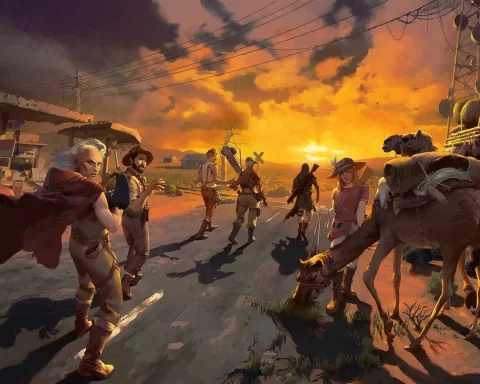Review by Harvard L.
When Runic Games sadly closed its doors in 2017, we all thought we’d seen the end of the Torchlight franchise. The studio’s two action RPG titles were examples of impeccable polish – immensely playable, worked well in short bursts or long sessions, solo or in a party, and were compulsive like nothing else on the market. None of us expected Panic Button to take the game to current-generation consoles, much less the Nintendo Switch. It’s a fantastic port too – this is a game which greatly benefits from portability, and being able to share the experience.
Torchlight II is, mechanically, a simple action RPG. It’s modeled after Blizzard’s Diablo II and WildTangent’s PC game Fate (anyone remember that one?), in that it offers a rapidly looping cycle of killing monsters, picking up loot, upgrading characters and then killing stronger monsters. The game is extremely kinetic – you’ll receive a very small amount of quests and all of them have simple objectives and clear waypoint markers. You’ll never need to figure out where to go, or solve any tedious puzzles, or do any fetch quests. It’s just plain and simple: kill, loot, upgrade, repeat.
When I say that Torchlight II’s design is polished, its design philosophy is really a double-edged sword. Polish simplifies things, it removes the chaff of the experience and keeps the remaining package laser-focused. There are a lot of things missing from Torchlight (namely a deep story, advanced skills, a complex player stats system, overworld puzzles, etc.) but each of these things is in its own way inessential to the experience this game wants to be. It wants to keep the player locked into the power fantasy of killing monsters, getting stronger, and pushing forward – and it’s discarded anything which does not directly contribute to this end.
This is to say that Torchlight II, in every sense of its design, is a carrot on a stick. Its speed and ease of access just make the compulsive gameplay loop a lot more apparent, and a lot more compelling, than most other RPGs of its kind. And, because of this nature, reviewing the game does feel a little silly – like I’m praising the carrot for being aesthetically tantalising (knowing full well that I’ll never actually get to eat it; that’s the whole point) or the fishing line it’s hanging on for being particularly transparent and noticeable. It’s like saying the carrot is dangling the perfect distance away from my mouth – far enough that I’ll never reach it, but close enough that I’ll always want to keep trying. Overall, there’s a useful conversation to have about what games are valuable uses of time, and what ultimately can be gained from the act of play.
I’m not always in the mood for that conversation though – and when I’m able to shut off that voice, that is when I really, really appreciate what this game is trying to do.
Combat is fast and fun, owing to a simple control scheme and some very juicy animations. The game maps quite faithfully to the Switch’s controls – Movement is handled with the left stick, autoattacks with A, health and mana potions mapped to the shoulders and the rest of the face buttons and triggers open for active skills. It is a slight reduction in the amount of active skill slots compared to the PC version, but it’s more than enough to get by. Targeting is also hampered by the control setup. The game has a very weak, contextual lock-on based on the direction your character is facing when you hit the attack button. There is no way to manually lock onto enemies, by the way – the right-stick is used for camera control. This makes ranged classes particularly cumbersome to play since there’s no way to kite enemies confidently (you can rotate your character in place by clicking down the left-stick though) but there are also very few enemies which require this level of complex movement.
I’ve also never really needed to stop and think at any point in the game. Equipment tends to be compared on a fairly linear scale: stats are boiled down to a simple Strength/Dexterity/Intellect/Vitality system – you won’t ever need to weigh up the opportunity cost of sacrificing attack speed and accuracy for a bigger damage number, for example. I’ve never had to weigh up whether I wanted to pick up loot or not – the game’s generous 100 item slots dictates about when you’ll want to return to town and cash in everything you picked up that’s not a direct upgrade to your current setup.
Skills are similarly simplified – players start by picking one of four character classes, each with three possible skill trees containing five active skills and three passives. It’s not hard to figure out what the purpose of each active skill is: they all boil down to some iteration of DPS, AOE damage, crowd control or support. Each of the game’s four character classes are split between melee and ranged, but otherwise could quite reasonably fill any role in your stereotypical RPG party. You also get just one skill point per level – and you’ll be around level 60-70 by the endgame. You’ll only get enough points to max out four or five skills, and that’s just as well, because the Switch’s lack of mappable face buttons will want to keep your repertoire small. The result is that I’ve never needed to actually think about where I’d like to spend my skill points: while rushing through enemy camps I’d be thinking “Gee it would be nicer if my AOE damage was a bit stronger” and it would take me all of fifteen seconds in the menus upon leveling up before I was back into the field and racking up experience to get the next one.
This ethos is closely reflected in the game’s approach to difficulty, too. While the main quest is just one big straight line through the game’s various locales, there will be sidequests and additional challenges in little caves and one-off dungeons which house a boss and some extra loot. Enemies never respawn in Torchlight II, so the developers have clearly designed the difficulty curve around the minimum and maximum level the player could have at any given point. Overlevelling can trivialise the challenge of the boss encounters on the easier difficulty levels – they are carefully designed with easy attack patterns, but that doesn’t mean much when the player can just stand there and mash the attack button, drinking a potion when needed. On harder difficulties, even after completing all of the sidequests the player will still face a hefty challenge at each boss, and no real way to level grind their way to victory.
This simplification is both Torchlight II’s weakness and its strength: it’s what prevents me from having deep attachments to my characters in the way that other, more complex games like Titan Quest have done, but it’s also what allows me to power through for hours at a time and never feel bored or dissatisfied. Say what you want about the ethics of creating this kind of compulsive design, but it works – if I had the self-awareness to be playing something with more thematic depth to it, I would. If I’m tired after a long work day and I just want something to grind through, it’s virtually impossible to play Torchlight II and not feel like you’re progressing.
The game also features some robust multiplayer options which thankfully have made their way over from the PC version. Players can create characters and jump into another player’s world either via Online Multiplayer or Local Play. Online works like a charm through the Switch’s friends list system, and it can be nice to rush through with someone else to keep you company. Local play requires both players to have a copy of Torchlight II though – unfortunately there’s no way to have two players sharing one screen, which is a feature that “console-style” releases for Action RPGs really should have.
Multiplayer unlocks an additional (and much needed) layer of depth for Torchlight II. The best way to go about it is to pick different character classes and try to build skills that complement each other – perhaps one player decides to build tanky to draw enemy aggro, and another specs for ranged DPS. There are very few class-specific pieces of equipment but it does feel nice to share them around rather than selling them for shop value, and same goes for “sets” of equipment which afford additional bonuses when equipped together. It’s a little extra social dopamine to go with your dungeon crawl.
Playing solo isn’t too lonely either – each player gets a pet which functions as a fantastic physical attacker. Nearly all the classes also get the option to unlock a summon skill too – you won’t be able to control them directly, but the game’s AI is smart enough to manage them. Plus, there are very rarely instances where focusing one type of enemy over another is the key to victory.
Torchlight II is a cleverly designed game which is decidedly good at what it does – even if it is following a fundamentally flawed design philosophy. Its gameplay is compulsive and honestly a little bit vapid: the incessant grind and push forward is neither intellectually stimulating nor conducive to big, memorable moments. My time through Torchlight II is really just a blur of primary colours and explosions of gibs. If that’s what you need, and you’re able to look past the very deliberate shortcomings, then this will be a game that you will find hard to put down.
– Harvard L.
Contributor


